Introduction:
Misconceptions about tire pressure abound. Many believe that as long as their tires look fine, they’re good to go. But here’s the truth: proper tire pressure is paramount for your safety and your vehicle’s performance. One small instrument plays a significant role in this – the tire gauge.
Table of Contents
In this guide, we’ll unravel the mysteries of tire pressure, explore the types of tire gauges, and delve into the step-by-step process of reading them accurately. So, let’s debunk the myths and equip you with expert knowledge on how to read a tire gauge like a pro.
I.Why Tire Pressure Matters
Picture this: you’re cruising down the highway, and your tires are slightly underinflated. To the naked eye, they may look fine, but beneath the surface, your safety is at risk, and your wallet might take a hit too. Here’s why tire pressure matters more than you might think:
Safety First:
Maintaining the right tire pressure is essential for your safety and the safety of those on the road with you. Underinflated tires can lead to poor handling, decreased traction, and an increased risk of accidents. On the flip side, overinflated tires are more prone to blowouts.
Fuel Efficiency:
Your wallet will thank you for this one. Properly inflated tires reduce rolling resistance, which means your vehicle doesn’t have to work as hard to move. This translates to improved fuel efficiency and fewer trips to the gas station.
Tire Longevity:
Longevity is the name of the game. Incorrect tire pressure can lead to uneven wear, reducing the lifespan of your tires. Replacing tires prematurely can be a costly affair.
Handling and Performance:
Have you ever felt your car pull to one side or noticed it doesn’t respond as crispy as it used to? Incorrect tire pressure can affect your vehicle’s handling and performance, making it less enjoyable to drive.
II.Types of Tire Gauges
Tire gauges come in various shapes, sizes, and types. Understanding the differences between them is crucial for accurate tire pressure readings. Let’s explore the most common types of tire gauges:
1.Digital Tire Gauges:
Digital tire gauges have become increasingly popular due to their accuracy and ease of use. These handheld devices feature an LCD screen that displays the tire pressure reading in PSI, kPa, or bar. They often come with a simple on/off button and a nozzle that attaches to the tire valve. Digital gauges are known for their precision, making them a favorite among car enthusiasts and professionals.
2.Analog Tire Gauges:
Analog or dial-type tire gauges have been around for a long time and are known for their durability. These gauges have a needle that moves around a dial to indicate the tire pressure. While analog gauges can provide accurate readings when well-maintained, they may require a bit more skill to use correctly. The key is to ensure the needle is zeroed before taking a reading.
3.Pencil-Type Tire Gauges:
Pencil-type tire gauges are simple and affordable. They resemble a small, pen-like tool with a pocket clip. To use them, you press the gauge onto the tire valve, and a small rod extends to indicate the pressure. While they are convenient to carry and can be handy in a pinch, they are generally less accurate than digital or analog gauges.
4.Tire Pressure Monitoring Systems (TPMS):
In recent years, many modern vehicles come equipped with built-in TPMS. These systems constantly monitor tire pressure and display the readings on your dashboard. TPMS can be quite accurate and convenient, but they may require specialized tools and knowledge for maintenance.
Choosing the Right Tire Gauge:
Selecting the right tire gauge for your needs is crucial. Consider factors such as accuracy, ease of use, and your level of expertise. For everyday drivers, a digital gauge may be the best choice due to its user-friendliness. However, if you’re a car enthusiast or need precise readings for specific purposes, an analog gauge may be more suitable.
When choosing a tire gauge, keep in mind the type of vehicles you’ll be using it on, as pressure requirements can vary between cars, SUVs, and trucks. Always check the gauge’s calibration regularly to ensure accurate readings.
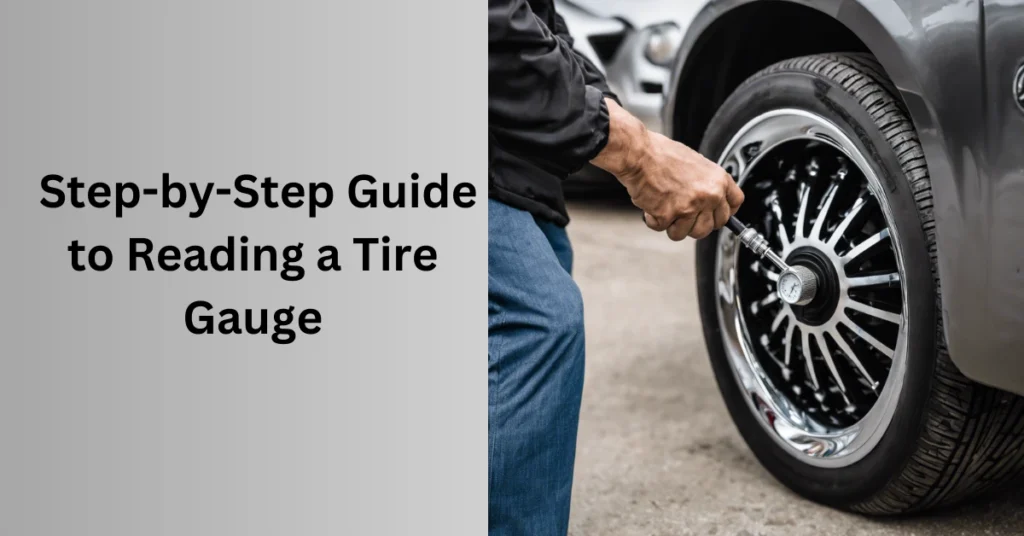
III. Step-by-Step Guide to Reading a Tire Gauge
Now that you’re equipped with the knowledge of different tire gauge types, it’s time to roll up your sleeves and learn how to use them effectively. Whether you have a digital, analog, or pencil-type gauge, the principles are quite similar. Here’s a step-by-step guide to reading your tire gauge like a pro:
1.Prepare Your Gauge:
- Before you start, ensure your tire gauge is in good working condition. Check for any visible damage or debris that might affect accuracy.
- If you have an analog gauge, make sure the needle is set to zero (or “20” on some gauges) while it’s not connected to a tire valve. For digital gauges, just turn them on.
2.Find the Valve Stem:
- Locate the valve stem on the tire you want to check. It’s typically a small, cylindrical protrusion on the tire’s rim.
3.Remove the Valve Cap:
- Unscrew the valve cap and set it aside in a safe place. This will allow you to access the valve for measuring.
4.Attach the Gauge:
- If you have a digital or pencil-type gauge, press the nozzle firmly onto the valve stem until you hear a hissing sound or the gauge’s reading stabilizes.
- For an analog gauge, press the nozzle onto the valve stem and hold it in place.
5.Read the Pressure:
- If you’re using a digital gauge, wait a few seconds until the reading stabilizes. The pressure will be displayed on the screen in PSI, kPa, or bar.
- With an analog gauge, observe the position of the needle as it points to the pressure on the dial.
6.Record the Reading:
- Take note of the tire pressure reading. It’s essential to write it down or remember it if you’re checking multiple tires.
7.Compare to Recommended Pressure:
- Check your vehicle’s recommended tire pressure. You can find this information in your car’s manual or on a sticker located inside the driver’s door frame or the glove compartment.
- Compare the measured pressure to the recommended pressure. If it’s too low, you’ll need to add air. If it’s too high, you’ll need to release some air until it matches the recommended level.
8.Replace the Valve Cap:
- Once you’ve recorded the pressure and made any necessary adjustments, screw the valve cap back onto the valve stem securely.
9.Repeat for All Tires:
- Don’t forget to check all four tires, including the spare if you have one. Each tire may have different pressure requirements.
By following these steps, you’ll be able to read your tire gauge accurately and ensure your tires are properly inflated for safe and efficient driving.
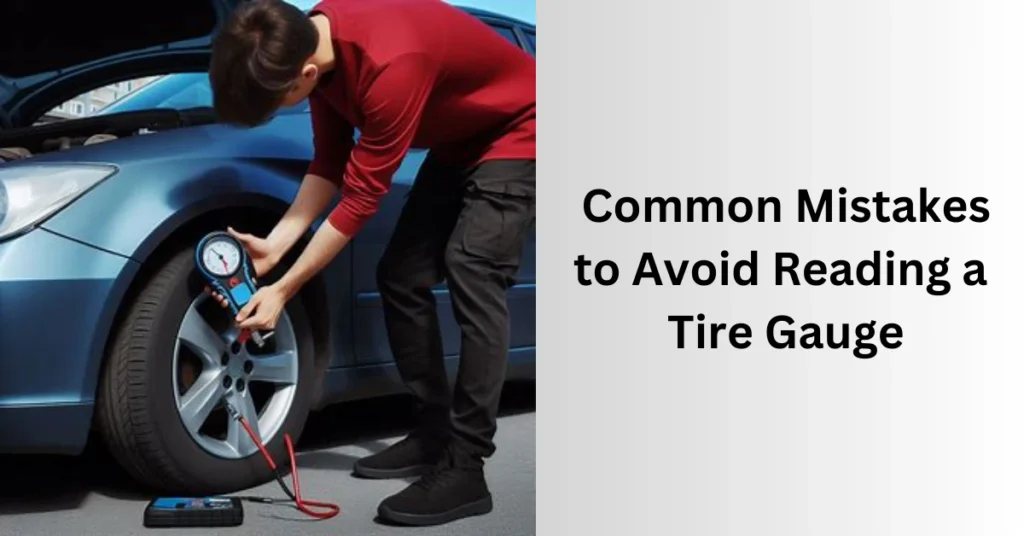
IV.Common Mistakes to Avoid
In our journey to become tire gauge experts, it’s crucial to be aware of common mistakes that can lead to inaccurate readings and potential issues down the road. Let’s explore some of these pitfalls and how to steer clear of them:
1.Neglecting Regular Checks:
- One of the most common mistakes is not checking tire pressure regularly. Many drivers only think about it when they notice a problem. Make it a habit to check your tire pressure at least once a month and before long trips.
2.Ignoring Temperature Changes:
- Tire pressure can vary with temperature changes. As the weather gets colder, tire pressure tends to drop, and as it gets warmer, it increases. Neglecting these variations can result in incorrect readings.
3.Overinflation:
- Some drivers believe that overinflating their tires will improve fuel efficiency. However, this can lead to reduced traction, a harsher ride, and uneven tire wear. Always follow the manufacturer’s recommended pressure.
4.Skipping Valve Cap Replacement:
- The small valve cap might seem insignificant, but it plays a vital role in keeping dirt and moisture out of the valve stem. Neglecting to replace it can lead to valve damage and slow leaks.
5.Rushing the Measurement:
- Taking a quick pressure reading without allowing the gauge to stabilize can result in inaccurate results. Give the gauge a few seconds to settle on a precise reading.
6.Using a Damaged Gauge:
- A damaged gauge can yield incorrect readings. Regularly inspect your tire gauge for any signs of wear or damage and replace it if necessary.
7.Inconsistent Technique:
- Consistency is key. Ensure you use the same gauge and the same technique each time you check your tires. Different gauges may yield slightly different readings.
8.Neglecting the Spare Tire:
- Don’t forget about your spare tire. It’s often overlooked but equally important. Check its pressure periodically to ensure it’s ready for use in case of emergencies.
9.Not Adjusting for Load:
- If you frequently carry heavy loads or tow trailers, you may need to adjust your tire pressure accordingly. Check your vehicle’s manual for guidance on load-specific tire pressure.
By avoiding these common mistakes and following the best practices outlined in this blog, you’ll be well on your way to becoming a tire pressure expert and ensuring your safety on the road.
V.The Science Behind Tire Pressure
Understanding the science behind tire pressure might not make you an automotive engineer, but it can certainly help you appreciate the importance of maintaining the right pressure levels. In this section, we’ll delve into the physics and mechanics of tire pressure and how it affects your vehicle’s performance:
Pressure and Tire Functionality:
- To comprehend the significance of tire pressure, think of your tires as the foundation of your vehicle. The air inside them supports the weight of the car, passengers, and cargo. The pressure creates a cushion that absorbs shocks and impacts from the road.
The Ideal Gas Law:
- Now, let’s get a bit scientific. Tire pressure follows the principles of the Ideal Gas Law, which states that the pressure of a gas (in this case, air) is directly proportional to its temperature and the number of gas molecules. As the temperature increases, so does the pressure, and vice versa.
Effects of Underinflation:
- When your tires are underinflated, there’s less air inside to support the weight of your vehicle. This leads to increased rolling resistance, which means your engine has to work harder to move the car. As a result, fuel efficiency decreases, and you might notice a drop in gas mileage.
Effects of Overinflation:
- On the flip side, overinflated tires are like rigid balloons. They have less contact with the road, reducing traction and making your vehicle less stable, especially in wet or slippery conditions. Over time, overinflated tires can also wear out unevenly.
Temperature Variations:
- Temperature plays a significant role in tire pressure. As the weather changes, so does the pressure inside your tires. For every 10°F drop in temperature, tire pressure can decrease by 1-2 PSI. It’s essential to check and adjust your tire pressure with the changing seasons.
Handling and Safety:
- Proper tire pressure is crucial for your vehicle’s handling and safety. It ensures optimal contact with the road, responsive steering, and efficient braking. Incorrect tire pressure can compromise your ability to control the vehicle, especially in emergency situations.
Understanding these scientific principles behind tire pressure highlights why it’s not just about maintaining your vehicle but also about your safety on the road.
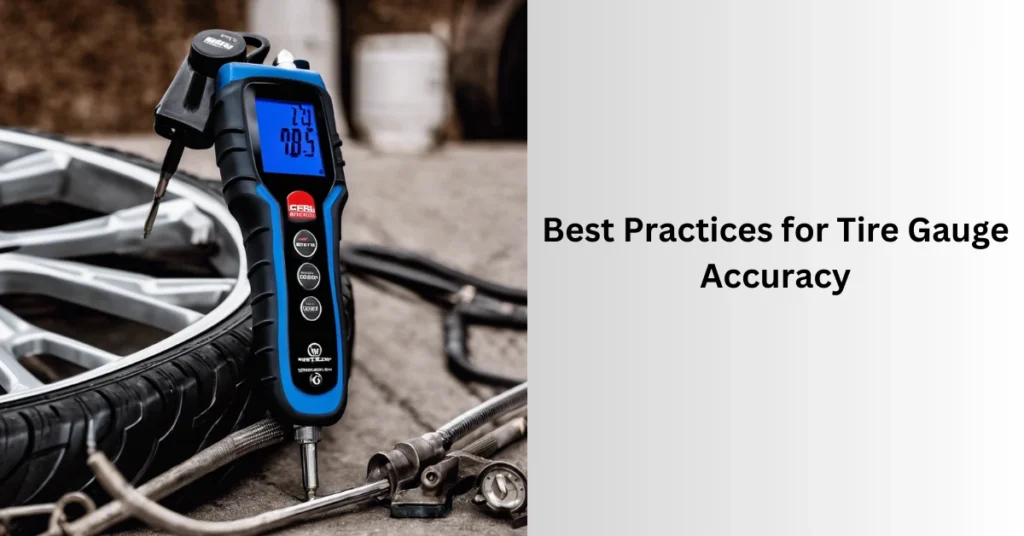
V.Best Practices for Tire Gauge Accuracy
Now that we’ve covered the essentials of tire pressure and the science behind it, it’s time to focus on ensuring that you get accurate readings when using your tire gauge. Here are some best practices to help you maintain precision:
1.Calibrate Your Gauge:
- Regular calibration is crucial to ensure your tire gauge provides accurate readings. Follow the manufacturer’s instructions for calibration or seek professional assistance if needed.
2.Store Your Gauge Properly:
- Store your tire gauge in a cool, dry place away from extreme temperatures and direct sunlight. Protect it from physical damage to maintain its accuracy.
3.Use the Same Gauge Consistently:
- If you have multiple gauges, try to stick with one and use it consistently. Different gauges can give slightly different readings, and consistency helps ensure accuracy.
4.Check the Gauge Before Use:
- Always check your gauge’s zero reading before attaching it to a tire valve. If it’s not at zero, adjust it before taking a reading.
5.Perform Measurements on Cold Tires:
- Tire pressure can change as tires heat up during driving. For the most accurate readings, check your tire pressure when the tires are cold, ideally before you start your journey.
6.Measure All Four Tires:
- Don’t forget to check all four tires, including the spare if you have one. Consistent pressure across all tires is essential for safe and balanced driving.
7.Test Multiple Times:
- To ensure accuracy, measure the same tire multiple times and take an average reading. This helps eliminate any minor variations in readings.
8.Record the Readings:
- Keep a log of your tire pressure readings and the date they were taken. This will help you monitor changes over time and identify any issues early.
9.Maintain Valve Caps:
- Ensure that the valve caps are tightly secured after checking the tire pressure. Loose or missing valve caps can lead to air leakage.
10.Consult the Manufacturer’s Manual:
Always refer to your vehicle’s manufacturer manual or the tire manufacturer’s recommendations for the ideal tire pressure for your specific vehicle and tire type.
By following these best practices, you can consistently obtain accurate tire pressure readings and maintain the safety and performance of your vehicle.
VI.Choosing the Right Tire Gauge
Selecting the right tire gauge is a crucial step in maintaining accurate readings and ensuring your tire pressure remains at optimal levels. With various options available, it’s essential to pick the one that suits your needs. Here’s a guide to help you make an informed decision:
1.Consider Your Skill Level:
- If you’re new to checking tire pressure, a digital tire gauge might be your best bet. They are user-friendly and provide clear digital readings, making them ideal for beginners.
2.Accuracy Matters:
- For precise measurements, choose a gauge known for accuracy. Digital and analog gauges are generally more accurate than pencil-type gauges.
3.Type of Valve Stem:
- Ensure the gauge’s nozzle fits easily onto your vehicle’s valve stem. Some gauges are designed for specific types of valve stems, so check compatibility.
4.Ease of Use:
- Look for a gauge that is easy to use. Consider features like a backlit display for nighttime use, an ergonomic design for a comfortable grip, and a straightforward on/off button.
5.Readability:
- Opt for a gauge with a clear and easy-to-read display. This is especially important for users with poor eyesight.
6.Durability and Build Quality:
- A well-constructed gauge can withstand regular use and last longer. Look for gauges with durable materials and a sturdy construction.
7.Pressure Range:
- Ensure the gauge covers the pressure range required for your vehicle’s tires. Some gauges are better suited for specific types of vehicles, so check the specifications.
8.Maintenance and Calibration:
- Consider how easy it is to calibrate and maintain the gauge. Some models require regular calibration, while others are self-calibrating.
9.Cost vs. Quality:
- While cost is a factor, remember that investing in a high-quality gauge can save you money in the long run. Cheaper gauges may be less accurate and less durable.
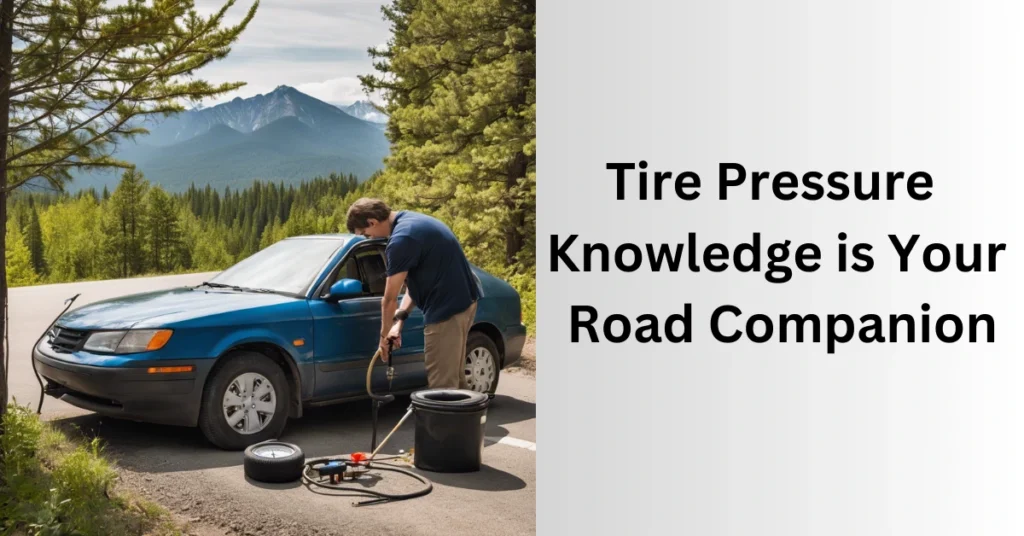
VI.Conclusion: Tire Pressure Knowledge is Your Road Companion
In our journey through the world of tire pressure, we’ve unraveled the mysteries of this often-overlooked aspect of vehicle maintenance. From understanding the science behind tire pressure to choosing the right gauge and implementing best practices, you’ve gained valuable insights that can enhance your safety, improve your vehicle’s performance, and even save you money.
Key Takeaways:
Before we conclude, let’s recap some key takeaways:
1.Tire Pressure Matters:
Proper tire pressure is not just a recommendation; it’s a fundamental aspect of vehicle safety and performance.
2.Gauge Selection:
Choose the right tire gauge that suits your needs, skill level, and preferences. Accuracy and ease of use are paramount.
3.Maintenance is Key:
Regularly check and maintain your tire pressure to ensure even wear, optimal fuel efficiency, and a smooth ride.
4.Tire Longevity:
Proper tire care, including alignment, rotation, and balancing, can significantly extend the lifespan of your tires.
5.Safety First:
Accurate tire pressure improves vehicle handling, reduces the risk of accidents, and enhances your overall driving experience.
In closing, always remember that your tires are the only point of contact between your vehicle and the road. Keeping them in top condition through proper tire pressure maintenance is not just a responsibility; it’s your road companion, ensuring a safe and enjoyable journey every time you hit the pavement.
We hope this guide has equipped you with the knowledge and confidence to read a tire gauge like a pro. As you embark on your tire maintenance journey, you’ll not only enjoy a smoother ride but also contribute to road safety and the longevity of your tires.
For more information please visit insightfullhome.com.
FAQs about how to read a tire gauge
Question 1: Why is proper tire pressure important?
Proper tire pressure is crucial for safety, optimal vehicle performance, fuel efficiency, and tire longevity. Incorrect tire pressure can lead to accidents, poor handling, and increased fuel consumption.
Question 2: How often should I check my tire pressure?
It’s recommended to check your tire pressure at least once a month and before long trips. Additionally, check when the weather changes significantly, as temperature affects tire pressure.
Question 3: What is the recommended tire pressure for my vehicle?
The recommended tire pressure can vary depending on your vehicle make and model. You can find this information in your vehicle’s manual or on a sticker inside the driver’s door frame or glove compartment.
Question 4: Can I use any tire gauge to check my tire pressure?
While most tire gauges can provide accurate readings, it’s essential to choose a reliable gauge that suits your needs and preferences. Digital and analog gauges are common choices.
Question 5: How do I read a tire gauge accurately?
To read a tire gauge accurately, ensure it’s calibrated, attach it firmly to the valve stem, wait for the reading to stabilize, and record the pressure. Check the gauge’s user manual for specific instructions.
Question 6: Are digital tire gauges more accurate than analog ones?
Digital tire gauges are known for their precision and ease of use, making them a popular choice for accurate readings. However, well-maintained analog gauges can also provide accurate results.
Question 7: Can I check my tire pressure when the tires are hot?
It’s best to check tire pressure when the tires are cold, as hot tires can give inaccurate readings due to increased internal pressure from driving. If you must check when the tires are hot, add 4 PSI to the recommended pressure.
Question 8: Is it normal for tire pressure to fluctuate with temperature changes?
Yes, tire pressure can vary with temperature changes. For every 10°F drop in temperature, tire pressure can decrease by 1-2 PSI. Regularly check and adjust tire pressure with changing seasons.
Question 9: What should I do if my tire pressure is too low or too high?
If your tire pressure is too low, add air until it matches the recommended level. If it’s too high, release some air until it’s within the recommended range. Always use the recommended pressure as a reference.
Question 10: How can I extend the lifespan of my tires?
To extend the lifespan of your tires, maintain proper tire pressure, rotate them regularly, keep the wheels properly aligned, and avoid overloading your vehicle. Quality tires and regular inspections also contribute to longevity.
We home that these FAQs about how to read a tire gauge help.

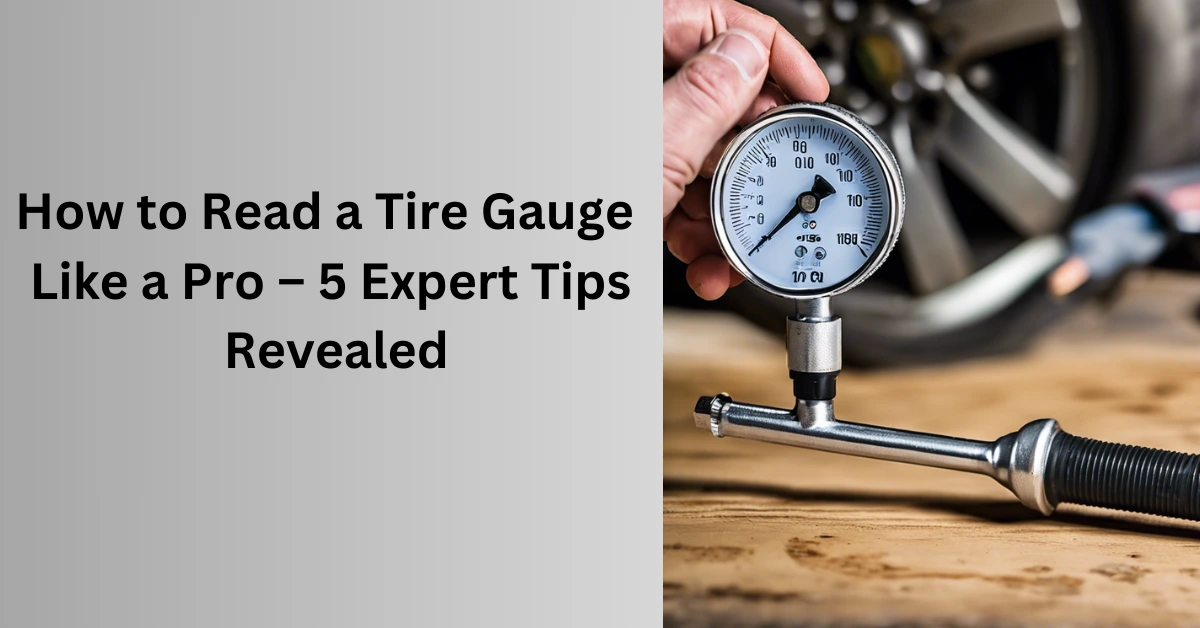
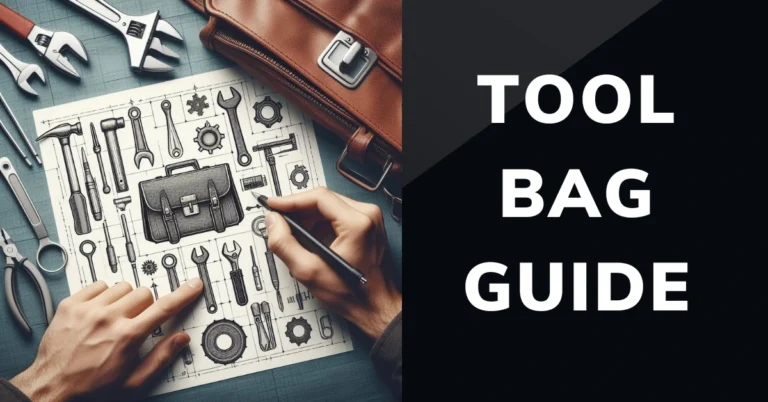


Pingback: How to Read a Tire Gauge Like a Pro – Amares
Pingback: Mastering Tire Gauge Reading: A Guide for Every Driver – insightfullhome.com
Can you be more specific about the content of your article? After reading it, I still have some doubts. Hope you can help me.
Of course! I’d be happy to provide more specific information to address any doubts you may have. Please feel free to ask any questions or clarify any points from the article, and I’ll do my best to assist you further.